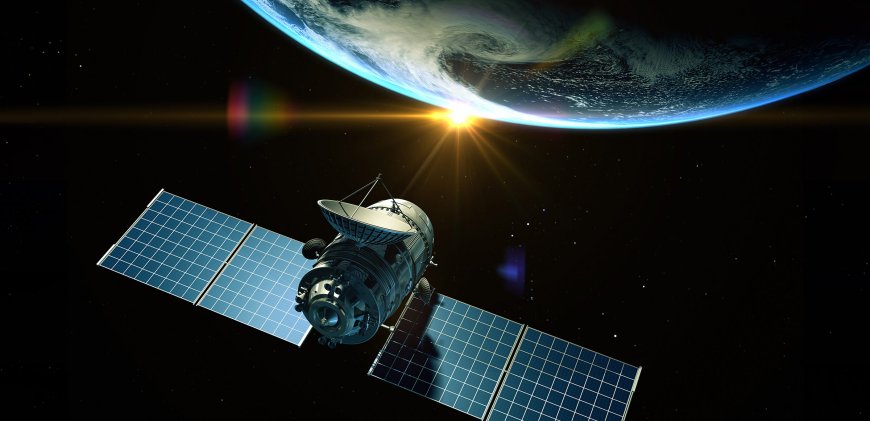Powering the Future: How Space-Based Solar Power Could Revolutionize Energy
Space-based solar power could revolutionize energy by collecting sunlight in orbit and beaming it to Earth. Explore the latest advancements and challenges.

Introduction: A Bold Vision for Limitless Clean Energy
Imagine a world where energy is abundant, sustainable, and available 24/7—no matter the weather, no matter the location. Now, imagine that energy being collected directly from space and beamed down to Earth.
This is not science fiction. It’s called Space-Based Solar Power (SBSP), and scientists believe it could be the ultimate renewable energy source.
Unlike traditional solar panels on Earth, SBSP systems operate in orbit, capturing continuous sunlight without the interference of clouds, atmospheric filtering, or nighttime darkness. If successful, SBSP could replace fossil fuels, combat climate change, and power entire cities with clean energy.
But how close are we to making this futuristic concept a reality? Let’s explore the science, the challenges, and the latest breakthroughs bringing space-based solar power within reach.
How Space-Based Solar Power Works
At its core, SBSP is a simple yet revolutionary idea:
- Giant solar panels in space collect the Sun’s energy.
- The energy is converted into microwaves or laser beams and sent to receiving stations on Earth.
- These stations convert the energy back into electricity and distribute it through the power grid.
Why Space? The Key Advantages
? Continuous Energy Collection – Unlike Earth-based solar panels, space solar stations never experience night and can generate power 24/7.
? No Weather Interference – Clouds, rain, and seasonal changes don’t affect solar energy collection in space.
? Higher Efficiency – Solar panels in space receive 5 to 10 times more sunlight than those on Earth due to the lack of atmospheric filtering.
? Global Energy Distribution – Energy collected in space can be transmitted anywhere on Earth, even to remote or disaster-stricken regions.
The Science Behind Wireless Power Transmission
One of the biggest challenges of SBSP is transmitting the energy back to Earth. Since running physical power cables from orbit is impossible, scientists have developed wireless power transmission methods:
1. Microwave Beaming
- Solar panels in space convert sunlight into microwaves (similar to those used in communication satellites).
- A ground-based rectenna (rectifying antenna) receives these microwaves and converts them back into electricity.
- Microwave transmission is safe, efficient, and can penetrate clouds.
2. Laser Transmission
- Some projects propose using lasers instead of microwaves to beam energy down to Earth.
- Lasers allow for more precise energy transmission but require clear weather conditions to work efficiently.
? Fun Fact: In 2020, the U.S. military successfully demonstrated wireless power transmission via microwaves in a space-to-ground test! (Source: Pentagon)
Major Space-Based Solar Power Projects
1. Japan’s JAXA Space Solar Power System (SSPS)
Japan’s space agency, JAXA, has been leading SBSP research for years. In 2015, they successfully beamed 1.8 kilowatts of power wirelessly—enough to power a kettle.
By 2030, JAXA aims to launch a full-scale orbital SBSP station to power entire cities. (Source: JAXA)
2. China’s Space Solar Ambitions
China has bold plans for SBSP, with a goal of launching a 1-megawatt solar power station by 2030 and a gigawatt-scale station by 2050.
Their Bishan Space Solar Energy Station is already testing wireless power transmission technologies. (Source: China National Space Administration)
3. NASA’s SPS-ALPHA Project
NASA has been studying SBSP for decades, with projects like SPS-ALPHA (Solar Power Satellite via Arbitrarily Large Phased Array).
Their concept involves a modular, sunflower-like solar station that could be built and expanded in orbit. (Source: NASA)
4. Caltech’s Breakthrough: The First Space Solar Power Prototype
In 2023, researchers at Caltech launched the Space Solar Power Demonstrator (SSPD-1)—one of the first real-world space tests of SBSP technology.
They successfully beamed power from space to Earth for the first time, marking a huge milestone in SBSP development. (Source: Caltech)
Challenges and Future Prospects
Despite its promise, space-based solar power isn’t ready for mass deployment yet. Several key challenges must be overcome:
1. High Launch Costs
- Building and launching massive solar arrays into orbit requires significant investment.
- However, as SpaceX and Blue Origin drive down launch costs, SBSP is becoming more financially viable. (Source: SpaceX)
2. Wireless Transmission Efficiency
- Energy loss occurs during microwave or laser transmission.
- More efficient transmission systems are needed to minimize power loss.
3. Space Debris & Maintenance
- Large space solar stations could be vulnerable to damage from space debris.
- Robotic repair systems and self-healing materials may help mitigate these risks.
When Could SBSP Become a Reality?
? By 2030 – Small-scale SBSP demonstrations providing power to military bases and remote regions.
? By 2040 – Large-scale orbital power plants supplementing global energy grids.
? By 2050 – SBSP could replace fossil fuels, powering entire cities and industries with clean energy from space.
(Source: International Energy Agency)
Final Thoughts: A Game-Changer for Renewable Energy?
Space-based solar power has the potential to transform the global energy landscape. If scientists can overcome the technological and economic barriers, SBSP could provide clean, limitless energy—powering everything from homes and factories to electric vehicles and entire nations.
With major space agencies and private companies racing to develop SBSP, the question isn’t if we’ll harness the Sun’s power from space—it’s when.
The future of energy is looking brighter than ever—and it may just come from above.
What's Your Reaction?
 Like
0
Like
0
 Dislike
0
Dislike
0
 Love
0
Love
0
 Funny
0
Funny
0
 Angry
0
Angry
0
 Sad
0
Sad
0
 Wow
0
Wow
0



















































